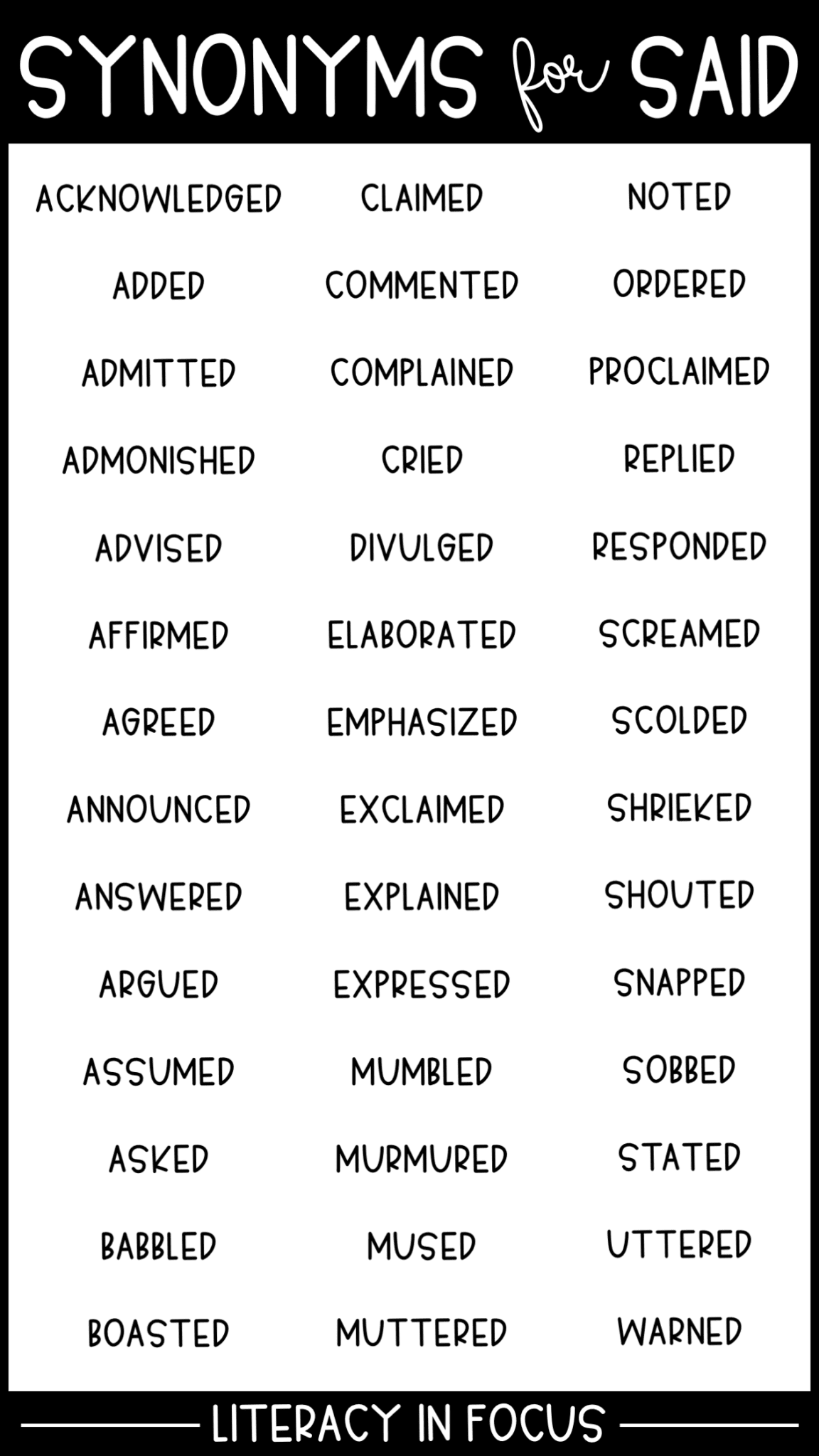


Now, that’s not to say that you can’t (or shouldn’t) vary up dialogue tags-to avoid situations like the above terrible example, you do want to drop dialogue tags, use action tags, and when relevant, use tags other than “said.” But generally, it’s best not to get too fancy with dialogue tags because anything that isn’t “said” (or a dropped tag altogether) draws attention to itself. “We’re using too many dialogue tags,” Mary said. “I’ve been great, and yourself?” Bob said. The only time it really becomes noticeable is if too many dialogue tags are used, for example: When it comes to writing dialogue, "said" is a somewhat magical word because it’s largely invisible. “Said,” however, is not usually a word you have to worry about overusing. That’s normal and easy to fix, and yes, should be adjusted particularly when it happens often enough to draw attention to itself. Usually this comes through with writer ticks-everyone has a couple crutch words or phrases that they often unconsciously insert into their work while writing, and the ticks often even change manuscript to manuscript. And I’m not 100% sure how this not-so-foolproof advice started, but I suspect it has to do with avoiding repetition in writing.Īs I’m sure many of you know, a common critique in any sort of writing is the accidental repetition of certain words and phrases. So every once in a while I come across writers online who mention trying to avoid “said” in their writing. The team’s results showed that the survey should reveal precise distances for 10 million galaxies from when the universe was between about 3-6 billion years old, since light that reaches the telescope began its journey when the universe was much younger.NOTE: Today is the day! If you've been curious about Beyond the Red's cover, you need be curious no longer-the cover is NOW live on YA Books Central's blog ! And I have it on good authority there miiiiight be something ARC-ish you guys can win. In current plans, Roman’s spectroscopy survey will cover nearly 2,000 square degrees, or about 5% of the sky, in just over seven months. These four passes, similar to taking a longer exposure, give better sensitivity and more precise measurements. Roman then creates the same mosaic, angled slightly, overlapping the first, and then two more times rotated about 180 degrees. It repeats this process eight more times to create a mosaic covering about 2.5 square degrees of sky. Roman starts with a single image "footprint" produced by its 18-detector array and then takes a second image slightly offset to cover the small gaps between the individual detectors. The sequence and layout of the Roman Space Telescope's High Latitude Spectroscopic Survey tiling pattern.Credit: NASA's Goddard Space Flight Center || The Nancy Grace Roman Space Telescope's Wide Field Instrument will use a special tiling pattern to perform its high latitude spectroscopic survey. Galaxies assembled along vast strands of gas separated by large voids, a foam-like structure echoed in the present-day universe on large cosmic scales. Each cube is about 100 million light-years across. As the universe expands, the density of galaxies within each cube decreases, from more than half a million at top left to about 80 at lower right. These six cubes show the simulated distribution of galaxies at redshifts 9, 7, 5, 3, 2, and 1, with the corresponding cosmic ages shown.

A shorter, faster version is available below.Ĭredit: NASA’s Goddard Space Flight Center/F. This video dissolves between the entire collection of redshift cubes in 55 seconds.


 0 kommentar(er)
0 kommentar(er)
